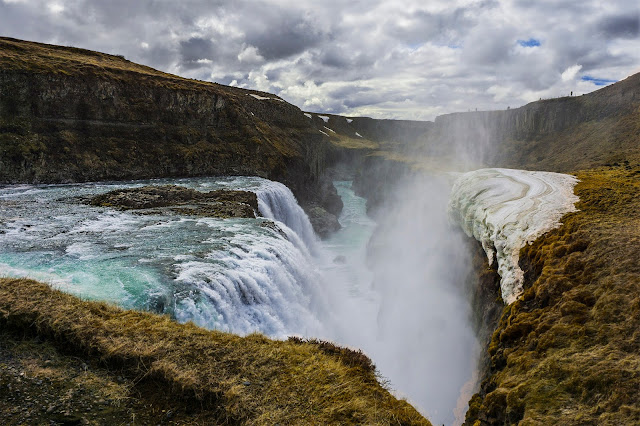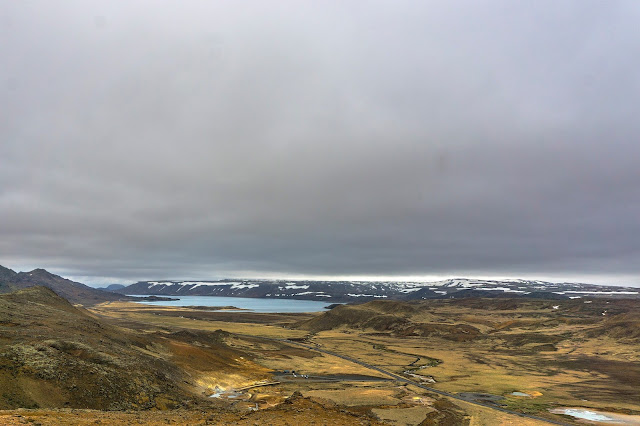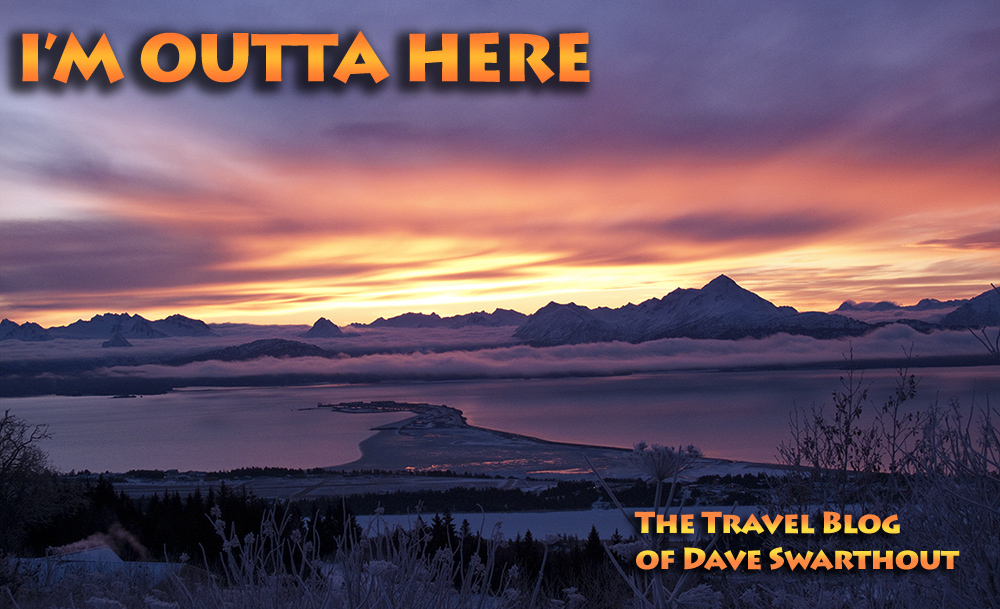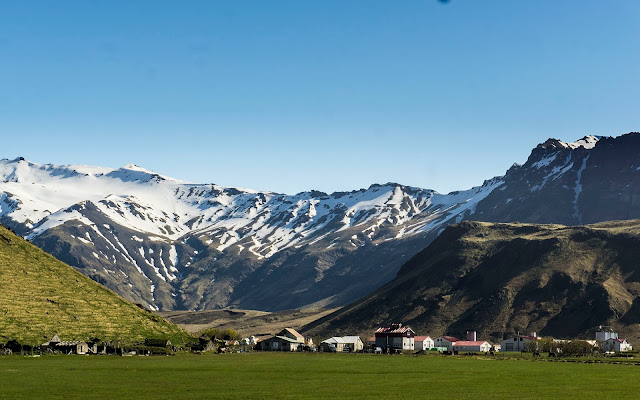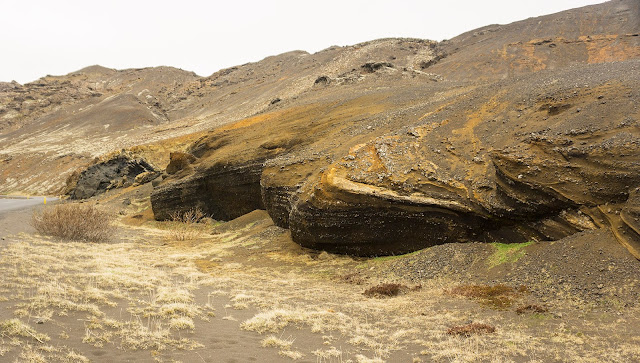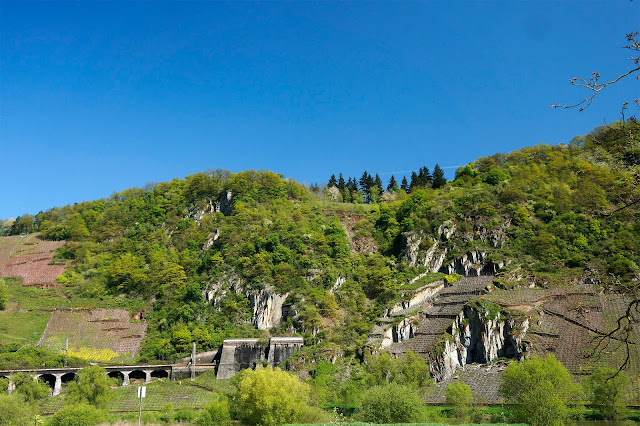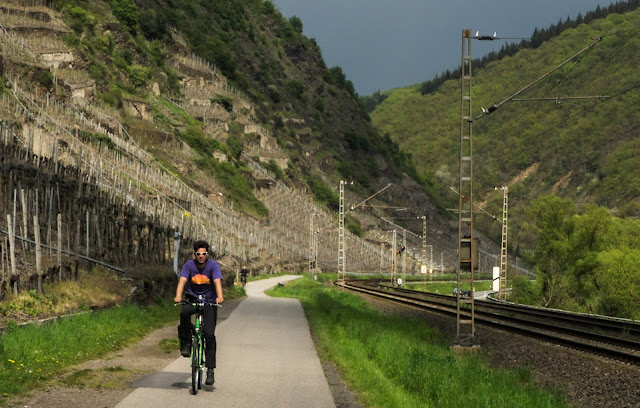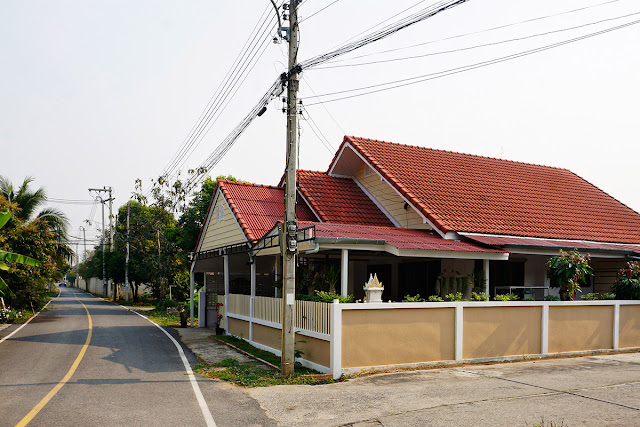I feel privileged to be able to live in Chiang Mai at this stage of my life. Although it's a big city with an area population of about 1.5 million and represents a challenge for small town folks like myself, it does offer many compensations not the least of which is an awesome array of excellent restaurants and cafes. Many of these places are not well known by tourists and some have menus only in Thai so this post could be helpful for folks coming for a visit who want to sample foods Thais normally eat.
Sometimes I'll tease Nut about moving further north where the weather is cooler, Chiang Rai for instance, but she always looks aghast and shoots back, "But where would we eat in Chiang Rai?" There are some good restaurants in Chiang Rai, sure, but the food choices here are vastly better and more varied. And we're both foodies so this is an important reason to stay where we are.
This post is not about high-end dining. We frequent neighborhood restaurants and a few special street food vendors both here in Nong Hoi and north of us in the city proper. There are certainly many excellent restaurants in town but we like to get a quality meal for between 40-150 baht ($1-5 USD) per person, which is easy in Chiang Mai if you know where to look. Plus, the few times we've spent the big bucks in a fine restaurant the food has been not as good as what can be had from these tiny shops. It helps that Nut can spot a good eatery from a mile away. She's led me to some very fine eating and introduced me to foods I would never have discovered on my own.
I'll start with
Nana Bakery right here in Nong Hoi. I adore bread and during my first few years in Thailand searched high and low for good bread. Thais aren't big on bread so a good loaf is hard to find but luckily Chiang Mai has a large expat population and Nana caters to it. The place is a goldmine, always busy, and always expanding. We were able to buy Nana croissants in Mae Sariang last month! They make various artisanal breads, buttery croissants and pastries and, speaking as a former sourdough bread baker, produce the best sourdough bread in Chiang Mai possibly in all of Thailand. They also offer a farang style breakfast for under $2 that's hard to beat for value because along with the eggs and bacon comes a latte or pot of tea and a freshly baked croissant. Nana Bakery is located near the junction of Mahidon Road and the Chiang Mai-Lamphun Road. (
N18.75770° E99.00851° Open Street Map)
 |
| Nana Bakery Sourdough Rye - 55 baht ($1.57 USD) |
 |
| Basic Nana breakfast including latte and croissant - 65 baht ($1.85 USD) |
A standby meal for us and for all Thais in general is noodle soup prepared using a meat stock, usually made from pork and pork bones, served with various condiments or seasonings and in many styles. A little background for the uninitiated: rice noodles are known as
kuaytiaw (ก๋วยเตี๋ยว) and are eaten for breakfast, lunch and dinner all over Thailand. Every town and hamlet no matter how small has a least one noodle shop. Noodles are always served with a
quartet of condiments, kruang bprung (เครื่องปรุง), for seasoning: nam pla or fish sauce for adding saltiness; sliced mild chilies in vinegar for sourness; sugar to counter that sourness; and hot chilis either powdered or in an oil paste to add heat. The whole idea here is to add enough of each ingredient to balance the flavor to your liking. I've know for a fact I've gotten good at this, especially at balancing the sour and sweet, because surprise, surprise, Nut will often ask me to season her kuaytiaw.
Our favorite place to eat noodles is at
Malee Noodles. They have four shops scattered around Chiang Mai but there's one right up the street from us at the 89 Plaza so Nut and I eat lunch there at least three times a week. Their Sukhothai tom-yum style noodles are fantastic. Malee at 89 Plaza is at (
N18.75203° E99.00875°), and here on
Open Street Map). Another location more convenient for tourists is in the old city on Arak Road just inside and adjacent to the moat, here (
N18.7900387, E98.978457) and shown on
Open Street Map. For more info about noodles see the links at the bottom of this post under Extras. They're open from 8 am until about 4 so it's not a spot for dinner.
 |
| Malee Sukhothai style kuaytiaw - 40 baht |
Another favorite is
Wang Sing Kam where you can find one of the best bowls of kuaytiaw pet (ก๋วยเตี๋ยวเป็ด), or duck noodle soup, in Chiang Mai. Along with the soup we often take a plate of grilled duck, pet yang, served with a lovely gravy, sliced ginger and dipping sauce. Wang Sing is near the intersection of Charoenrat and Kaewnawarat Roads here, (
N18.79451° E99.00080°) and on
Open Street Map. In addition to the kuaytiaw they serve dim sum among other things and iced herbal tea is free. Again, this is a daytime only venue - they close in late afternoon.
 |
| Wang Sing duck noodles |
Another Thai standby, especially in the northern provinces, is khao kha moo or stewed pork leg on rice (ข้าวขาหมู). Nut introduced me to khao kha moo when we lived in Bangkok and I'm here to tell you it's one of my favorite Thai foods. Whole fresh pork legs (kha moo) stewed until fork-tender in a rich seasoned gravy, served with rice, soft boiled egg and pickled greens — it's one of the tastiest meat dishes I've ever eaten. And the best place to eat it that we've found is at a tiny open air food stand in our old neighborhood near the Chang Phuak Gate. The gal who serves it is cute as hell in her trademark cowboy hat and she's also the owner of
Chang Phuak Khao Kha Moo. When my son Tuli was here a few years ago we took him to all our favorite restaurants and when I asked him later which was his favorite he told me it was "the place we ate that stewed pork".
I have another little story about this shop. We had some visitors from Homer last year, Amon and Laryssa, and we brought them here for dinner one evening. I was going on, as I tend to do, about the great food we were about to eat and Amon says, "We saw an Anthony Bourdain show about eating in Chiang Mai and this place was on it." On that show, he told me, the cowgirl chef revealed the secret of her gravy. "It's the same gravy we started with. We just add more pork leg and seasonings every morning." Truth or fiction? I dunno, but the gravy is awesome. I spent a couple of weeks in Udon Thani last spring and tried the khao kha moo at a few shops. It was just terrible! Once you've eaten here there's nowhere to go but downhill. Located on Maninopharat Road just west of Chang Phuak Gate in the Torung Chang Phuak Market, (
N18.79588° E98.98549°,
Open Street Map ), it's open from 5 pm until 2 am daily. If you want to get some just head to the night market near the Chang Phuak Gate on the north side of the moat and look for throngs of people mobbing a certain little food cart. That's the place!
 |
| Chang Phuak Khao Kha Moo for two, with boiled egg and pickled greens (50 baht, $1.40 USD) |
 |
| The justifiably famous lady I call the "Cowgirl" serves up some of the best food in Chiang Mai |
The little market area we're exploring here, generically known as a night market, can be found in all but the smallest Thai towns. During the day there's nothing much here to suggest what's to come — it's just a wide sidewalk. Then at around 3 or 4 in the afternoon the food vendors start arriving to transform the area. They bring everything they'll need for the evening on motorcycle pulled carts; dishes, cooking pots, stoves and propane bottles, vegetables, ice chests full of meats and seafood, eggs, the whole shebang. The Cowgirl sells five giant pots of pork legs per day and it must all be hauled to and from the market each day. Most night markets have a dozen or more food shops, as does this one, so a wide variety of fare is available usually for about a dollar a serving.
 |
| Google Streetview Thalat Torung Chang Phuak |
Another tiny shop we like also in this market is one that sells suki (สุกี้) and kuaytiaw. Nut's tried the kuaytiaw but I always order the suki because it's top notch. Thai suki is only distantly related to the similarly named Japanese sukiyaki and can be found all over northern Thailand. It's a dish composed of rice noodles, chinese cabbage, shrimp, chicken or pork, and egg, gently stir-fried and served with a spicy red sauce. As with so many foods, the secret's in the sauce and this shop has the best. The suki itself is easy to make, Nut's done it plenty of times at home, but we can't seem to capture the flavor of this red sauce either with her own sauce or any we've found in the supermarkets. Thai suki comes in several variations. I like the "dry" style, that is, without any soup stock. This is known as
suki hang (hang means dry in Thai). There is also
suki nam which is served with some sort of stock to make a soup. I like the suki hang goong, which is dry-style suki with shrimp, pictured below. Yumm!
 |
| Suki hang goong- 40 baht ( $1.15) |
 |
Chang Phuak Suki Shop - just a few steps west of the Khao Kha Moo Shop
(N18.79588° E98.98536°) |
Another favorite streetside shop is located inside the moat on the south side of the old city on Bamrung Buri Road near its eastern end. It's only a short walk from Thapae Gate but most tourists don't know about it. I often see tourists walk past and glance around looking for other farangs I suppose, and not seeing any, pass on by. Knowing how good the food here is, I find myself wanting to invite them in for a great meal. I haven't done it yet but someday...
Like so many others in the night market category, the kitchen is set up each afternoon in front of a Michelin tire store after it closes. In fact, Nut noticed that the cooks also work in the tire store during the day. I love fried oysters the way the Thais do it. Known as hoi tod (หอยทอด) I first had them in Bangkok. I could eat them every day except they're fried in oil and are much too rich to eat very often. This shop doesn't really have a name and the menu is unfortunately only available in Thai so you'll have to ask for your food by gesture or some other way. Hoi tod is something that I've tried at other shops but usually with disappointing results.
 |
| Google Streetview - east end of Bamrung Buri Road |
 |
| Fried oyster plate |
The only photo I have shows a plate of hoi tod partially eaten. Sorry about that. The oysters, plenty of oysters, are mixed with a batter of some sort, containing egg and perhaps rice flour, and then tossed into a skillet to be cooked. The finished product is served piping hot on a bed of bean sprouts. This is also eaten with a spicy red sauce, different from the suki sauce I bragged about earlier, but just as important for full enjoyment of the dish. They serve other foods here and Nut has sampled their curried pork and vegetables and a few other items, suki for example, but I always take the hoi tod as it's one of those things I love and just can't get anywhere else. They open at 5:30 pm on weekdays and are located at (
N18.78149° E98.99096°) and as described above.
I'll close this edition of Eating in Chiang Mai with a visit to the lovely
Sala Cafe. This is a place I discovered on one of my many mapping excursions in the rural town of Mae Rim just north of the big city. The gardens surrounding the cafe are simply gorgeous and there are tables scattered here and there among them. Sala Cafe is located on a small, out of the way rural road. How people find it is beyond me but in the four years we've been coming it has grown increasingly popular.
 |
| Cafe Sala entrance |
 |
| Garden salad with sliced roast pork, latte |
This cafe is a bit more expensive than the street vendors mentioned above yet, if you're used to stateside prices, still a bargain. The lunch above cost 140 baht, a little more than $3.50 USD. They have excellent pastries and the coffee is top notch too. I wanted to include it here to make a point I'll expand on in future posts; there is no shortage of quaint, charming cafes and coffee shops in this part of the world. Being in the tropics means beautiful plants are easy to grow and the Thais have a knack for using them to create elegant cafe environments complete with waterfalls, fountains and fish ponds. Even the coffee shop chains like Cafe Amazon that adjoin gas stations along Thailand's major highways have fountains and gardens to screen one from the hustle and bustle of the nearby traffic.
Sala Cafe is in Mae Rim at
N18.90453° E98.92189° near the ritzy Four Seasons Resort. See it on OpenStreetMap
here or on Google Maps
here. They're open daily from 8 am to 6 pm.
 |
| Sala Cafe mango cheesecake and a divine latte |
Stay tuned. I want to do more posts about Thai restaurants. I find that doing "research" about restaurants and food is some of the most enjoyable work I've ever done.
Thanks for reading.
Extras:
My earlier story about
Eating in Chiang Mai was posted back in 2012 before I got so involved with Open Street Map that I quit blogging and stopped doing almost everything else too.
Nana Bakery has a branch on
Chiang Khian Road here (N18.8121189, E98.9579347) but I don't think they serve food there.
Here is a
complete and well-written guide to noodle dishes many of which we enjoy often. It explains what Sukhothai and tom-yum style noodles are all about and much, much more.
Part of a blog about Thai food explains in depth the 4-part condiment set, kruang bprung, for seasoning kuaytiaw,
here.





